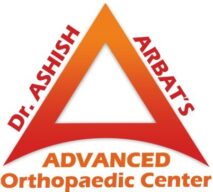
Hip impingement, or femoroacetabular impingement (FAI), happens when the femoral head (ball of the hip) pinches up against the acetabulum (cup of the hip). When this occurs, impairment to the labrum (cartilage that surrounds the acetabulum) can happen leading to hip stiffness and pain, and can cause arthritis.
As explained by Dr. Aashish Arbat, a recognized Orthopedic Surgeon in Pune, there are two main types of Hip impingement. The first is because of distortion of the femoral head (ball). In this type, the ball has a more oval look than round appearance. This shape generates friction when the ball hits the edge of the cup. The second kind of impingement happens when the acetabulum (cup) is oddly shaped. The cup may cover the head of the femur excessively. This creates friction when the edge of the cup hits the head/neck of the femur. It is also possible to have a grouping of these two types.
Contents
Hip Impingement Exercises
Many people presume that hip pain means they should take it easy and rest to give their hip time to recover. This is basically the opposite of what you want to do. Being too sedentary can truly do more damage than moving, even if you do have some uneasiness with certain activities.
Exercise won’t change the structure of your hip joint to rectify the impingement, but by firming up the muscles that surround your hips. You can create a rock-hard foundation to support your hip joints. This is what supports to comfort pain and uneasiness while improving your hip mobility.
Hip Impingement Symptoms
In the initial stages, there may be no indications related to hip impingement and the symptoms may be mild or vague. Some typical symptoms include:
- Stiffness in the thigh, hip, or groin
- The incapability to bend the hip beyond a right angle
- Pain in the groin area, mostly after the hip has been flexed (like after running or jumping or even sitting down for extended periods)
- Pain in the hip, groin, or lower back that can occur at rest as well as during activity
Hip Impingement Causes
- Misshapen femoral head
- Deformed femoral neck
- The hip socket that covers too much of the femoral head
- Recurrent “bumping” or impingement of the femur on the rim of the acetabulum
- Genetic and environmental factors
- Substantial athletic movement before a child’s bones are mature
- Participation in intense sports
- High physical activity level
- Prior injury
Strengthening Exercises for Hip Impingement Pain Relief
- Bridge
- Standing Hip Flexor Stretch
- Piriformis Stretch
- Groin Stretch
- Balance and Proprioception Exercise
Hip Impingement Test
Tests for diagnosing hip impingement include:
- Impingement Test: The hip replacement doctor brings your knee up toward your chest and then rotates it inward to ward your opposite shoulder. If this re-creates your hip discomfort, the test outcome is positive for impingement.
- FADIR (flexion, adduction, and internal rotation) Test: The patient lies on their back, with the legs straight and relaxed. Subsequently, the hip replacement doctor raises the affected leg so that the knee and hip are bent at 90 degrees.
- Imaging Tests: X-rays and MRI scans are used to authorize the existence of bone growth and impingement in the hip joint, as well as to evaluate impairment to cartilage.
You must be looking to know does hip impingement go away. Well, actual impingement won’t heal on its own, but conservative treatments like activity modification might be all you need to relieve symptoms. As you consult Dr. Arbat, a reputed hip replacement doctor in Pune, he may first suggest conservative treatment, like rest, activity modification, anti-inflammatory medications and sometimes physical therapy.
Hip Impingement Treatment
- Rest the affected hip.
- Modify activities to avoid moving the joint in a way that causes pain.
- Exercise as recommended by your doctor or physical therapist to strengthen the muscles that support the hip.
- In mild to moderate cases, nonsurgical treatment may include activity modification, pain medication, physical therapy, and corticosteroid injection.
- In more severe cases, arthroscopic or open surgery may be followed to reshape the bones, repair the labrum, and treat articular cartilage damage.
Hip Impingement Surgery
The Hip Replacement Surgery is generally recommended when non-surgical treatments like rest, physical therapy, and medications do not improve indications. Without treatment, FAI can cause osteoarthritis and other complications.
Hip Impingement Surgery Recovery
Recovery times can differ, but usually, patients are recommended to evade weight-bearing activities for 2 to 6 weeks post-surgery. Physical therapy is frequently suggested to help regain strength and mobility.
Takeaway
When the ball and socket of your hip joint don’t fit together appropriately because of a structural difference; it is Hip impingement. This is a common condition prevalent among active people, particularly athletes.
It’s essential to visit a medical professional for a suitable analysis and treatment plan for Hip Impingement. Without proper supervision, hip impingement can cause degeneration of the cartilage in your hip and put you at risk of developing osteoarthritis. If you are experiencing the symptoms; discuss with an orthopedic specialist in Pune immediately.

